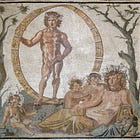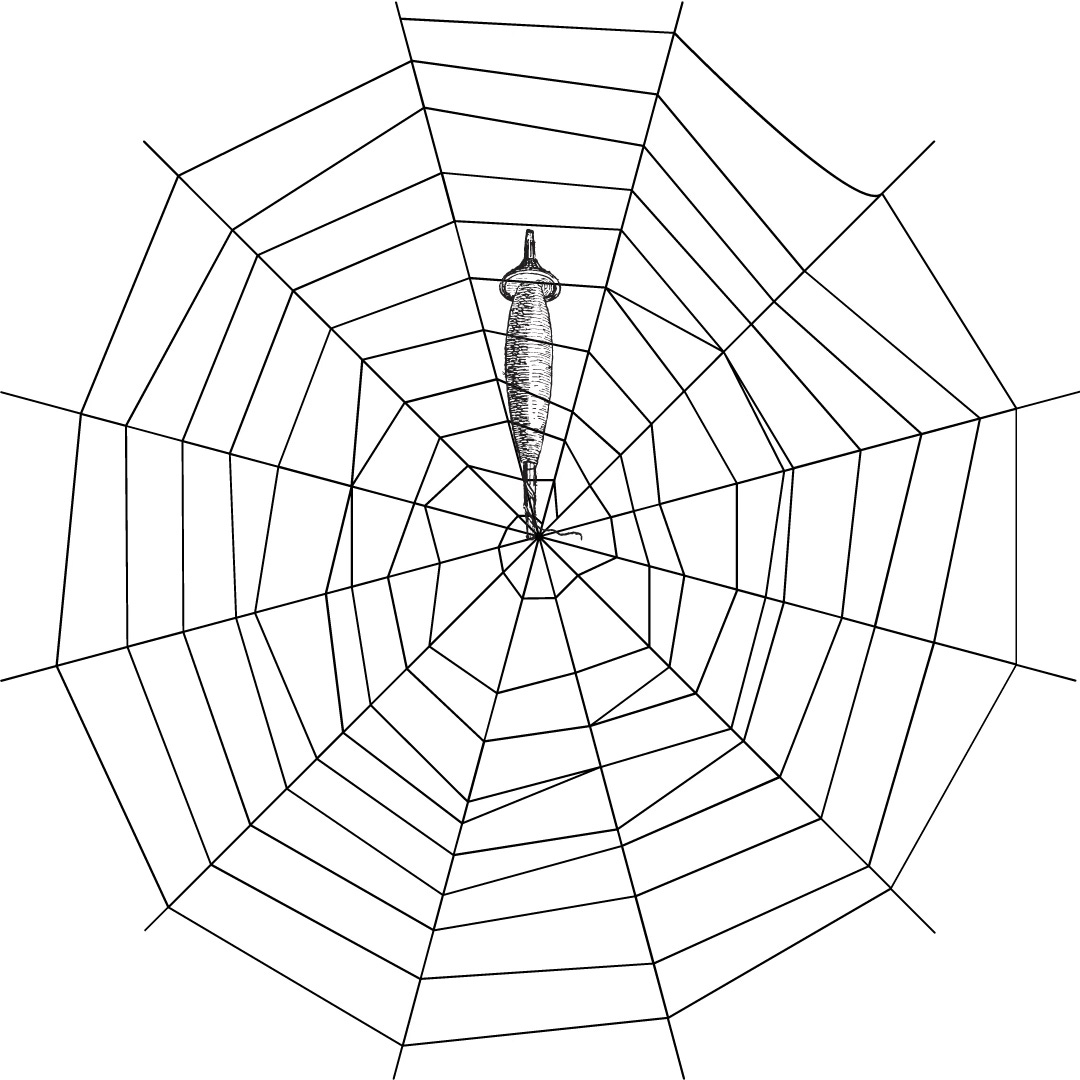The Orphic Hymn of Chthonic Hermes, Fugitive Trickster of the 5th dimension
Just in time for Mercury retrograde! Hermes, Necessity (Anankē), and Fate as cosmic forgetting.
CW that about 3/4 way down there’s a picture of a spider (not terribly closeup, but those with phobias are hereby cautioned).
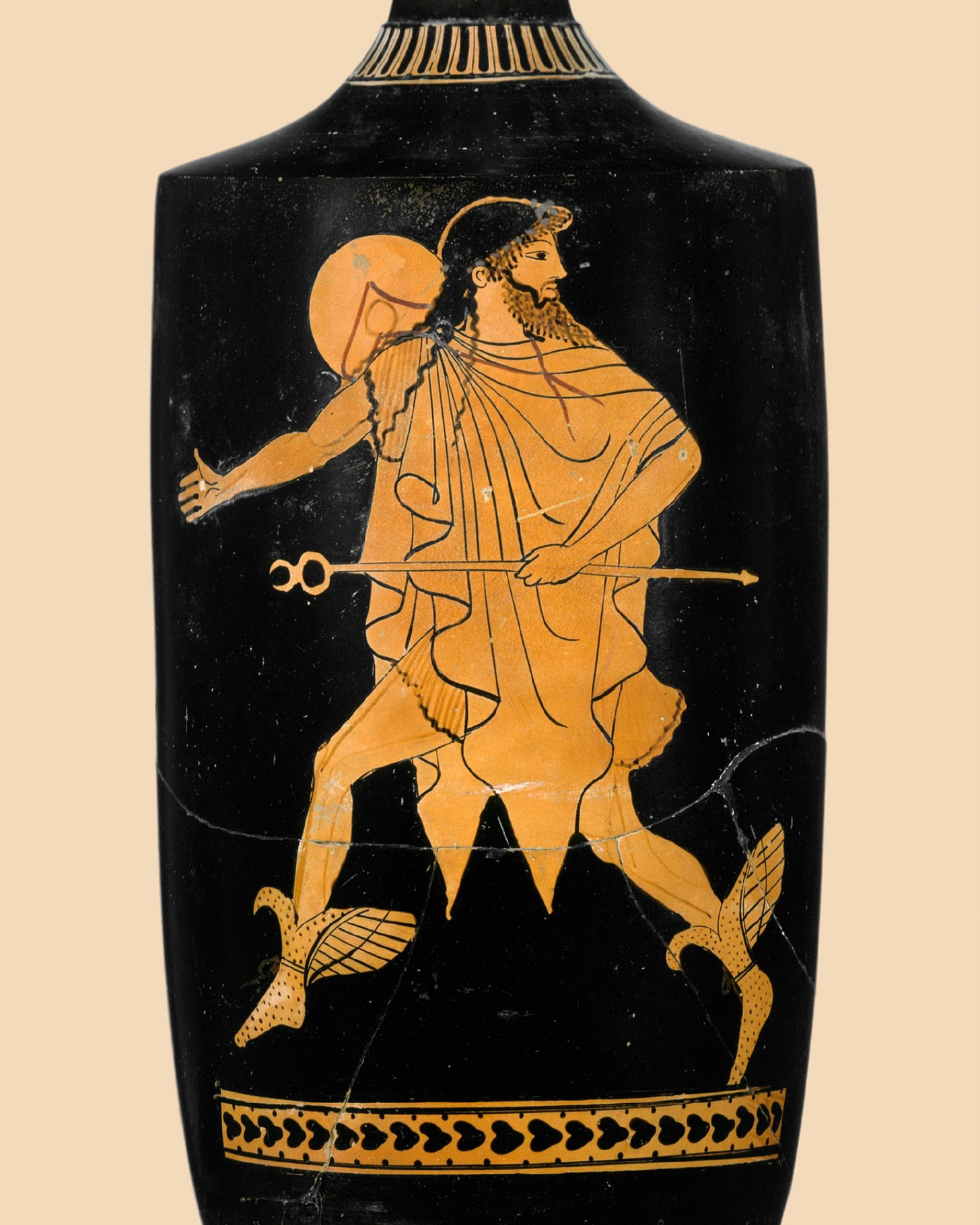
The season of Mercury Retrograde is fast upon us, which means Chthonic Hermes (aka Hermes of the Underworld, aka Hermes the Psychopomp, aka He who moves between dimensions) has entered the chat. Are you ready to get tricksy?
First off, a shameless plug for my earlier translation of the (straight-up non-chthonic) Orphic Hymn to Hermes, as well as Part 1 and Part 2 of the commentary to that Hymn. (There are even audio versions of the Hymn in Greek and English!) The three written pieces lay a LOT of the groundwork for this essay and translation, so feel free to review those before jumping into the even more wonderfully weird chthonic side of His personality.
So…get out your flashlight and inter-dimensional winged travel boots, because we’re about to go astral spelunking. And hang in there, because it’s going to feel like we’re not talking about Hermes at first, but that’s the way of the errant trickster god. His fugitive pathways are never easy to follow, but they ultimately lead to liberation. Trust.
In the beginning: A Loud-Roaring River
Right out of the gate with this Chthonic Hermes hymn, we realize that we’re not in Kansas anymore. In fact, the opening lines read more like an artsy horror flick, or perhaps a glam goth’s Hermes fanfic:
Spilling out of Cocytus, the River of Wailing,
on Necessity’s path of no return,
dwelling in Shrieking Necessity’s
twirled cord, her twisted strain…
I mean…talk about a dramatic entry! And who is this Necessity (Greek: Anankē), anyway? And why tf is She shrieking?
Let’s back up just a moment to give this vivid river image some context and visuals.
First of all, the River of Cocytus. Homer tells us that it’s one of two “loud-roaring” rivers that meet at the entrance to the underworld. (This is in Book 10 of the Odyssey, when the witch Kirke is giving Odysseus instructions on how to travel to the realm of the dead.)
Ok. So we’re definitely in the realm of the underworld from the very first line of the hymn. And Necessity, whoever She is, is connected somehow to the underworld “path of no return,” its “shrieking/wailing,” and images of twisting and twirling.
So Who, for the Orphics, is Necessity?
Well…here’s where the waters start to get really philosophically and cosmologically deep.
For the author(s) of the Orphic Hymns, Necessity (Anankē) is a cosmic force without which space-time could not exist.
Specifically, Necessity holds us in place as apparently separate bodies having discrete space-time coordinates.
That’s a lot to absorb. Let’s unpack it. If you’ve been following me here for awhile, you’ll remember that the Orphics knew we are always already one with the All, and we simply need to remember who we truly are (children of Earth and Starry Sky). We've never really truly been separate from each other.
BUT, that said…clearly something keeps us from recognizing our already perfect unity and connection. And for the Orphics, that force was Necessity, the child of Aphrodite.
Let’s look at Necessity as she’s traditionally pictured, because that will give us a really helpful visual to work with.
[A note here for those of you who may already be familiar with Necessity as a figure from Plato’s famous “Myth of Er”—Plato is writing AFTER the core of the Orphic teachings were developed, and, in fact, is drawing on them and then using them to support his own, much more hierarchical/binary ways of thinking. So in what follows, I’m trying to recover the original Orphic understanding of Necessity and Hermes, which to me, is much more interesting and challenging (in a good way) to our modern minds, which are in need of an antidote to the either/or, spirit/matter, up/down, heaven/earth binaries that so much of later Western philosophy employs.]
In nearly all her depictions, whether in early art and poetry or in later philosophical texts spindle, Necessity was pictured holding a drop spindle of the sort used by Greek women as part of their daily weaving work.
This “spindle of Necessity” was imagined as constituting the cosmic axis, or the “pole” around which the world turns.
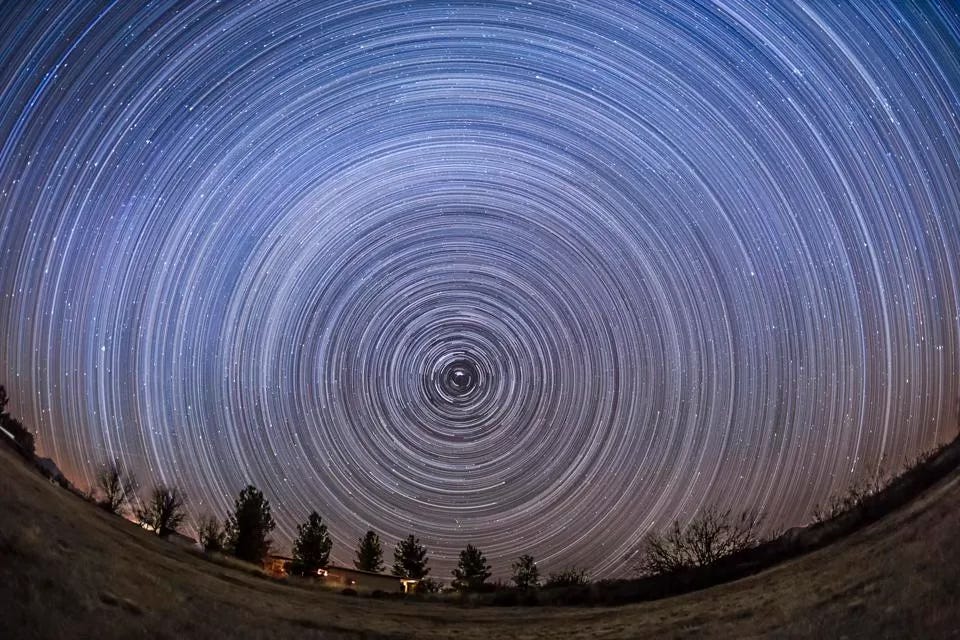
So the spindle Necessity held was centered on a point that became visible in the night sky. And what was “spun out” from this drop spindle-pole?
Space-time itself, whose passage and coordinates were marked by the stars.
Necessity’s Web
I’ve written elsewhere about how the Orphics thought about the inherently limiting nature of space-time . The link below goes more in-depth into Orphic understandings of Space-Time as a living Being, aka Kronos. I’m kinda in love with the Orphic idea of animate space-time, and I could gush about it all day.
For now, though, I want to focus on the image of Necessity’s spinning. What exactly is it that she’s spinning out?
Simply put: Necessity is spinning out the structure (or we could say order or arrangement) of the cosmos. In fact, that’s what the Greek kosmos means: Order, arrangement, or embellishment (as in an arrangement of items into a pleasing order).
Without Necessity, we’d be all smooshed together without differentiation. But by existing within space-time, we NECESSARILY exist (get it?) within a web defined by a set of particular times and places: our bodies, the bodies of our parents, our geographical location, the date of our birth, the seasons, years, and hours of our lives.
We could picture it something a little like this, where the threads (or cords) of Necessity lend structure to the cosmos, and help keep everything in the cosmic web where it should be. Necessity (Anankē) holds everything in its place.
Of course, this is a pretty schematic 2D representation of something that we should actually visualize in four dimensions. So the web that Necessity spins is perhaps better represented by something like this very imperfect AI-generated clip of a spherical tangle of 3D threads moving through time:
And we could give this 4D tangled ball/web that Necessity is spinning a name: The Moirai, or Fates. For our Fates—that is to say, our particular circumstances locatable in space-time—form the matrix within which we (and everything else in the cosmos) live our lives.
✨✨ESOTERICA ALERT✨✨There is a whole other book here to write on the fact that the word for “Fate” in Greek (moira) is identical to the word that is translated “degree” (moira) by translators of Hellenistic astrological texts. The words are one and the same. We are not born on a particular ascendant “degree.” We are born on (or into) a particular “Fate,” and that Fate is Herself a living being.
In this Orphic understanding, our whole chart is a web of intersecting Fate-beings, so we are quite literally born into a family of fate-being-stars. And if that doesn’t make you want to weep for the beauty of it all, you are a hard-hearted fool.
A further note: we can (and should!) place the origin of astrological charts in the contextof Orphic cosmology. I’ve talked about this in more detail before, in my webinar “Erotic Cosmos,” and in the forthcoming video of my 2023 Astromagia talk, but most notably (and at greatest length) in the STAR: An Orphic Initiation class I co-taught with my colleague Drew Levanti (and will be running again in 2024).
The image below gives you a brief visual, though, and a teaser.
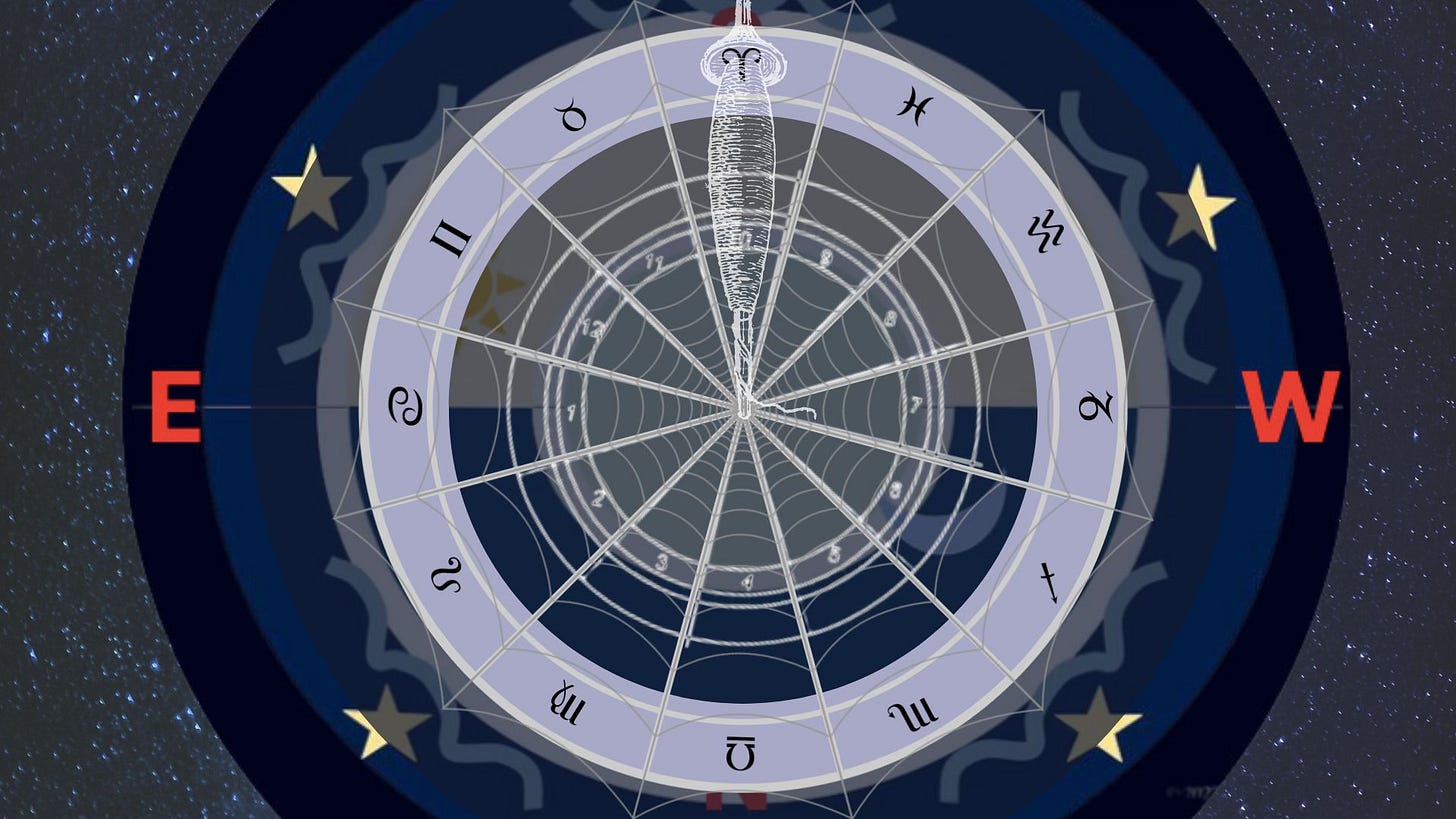
And now visualize this astrological chart as animate bodies (the Moirai) moving in four dimensions…a tangled ball of living Fate-beings twirling and weaving endlessly through time. THAT’s an Orphic understanding of Fate.
And even now we’re still not at Hermes. We need to back up even further and start with Aphrodite, actually. By way of The Flatlanders.
Because to understand Necessity as the force that keeps things in place in the cosmos, we need first to understand Aphrodite, aka the All, aka She who exists in, but also beyond, space-time.
Aphrodite, for the Orphics, is THE primordial force. She is pure attraction. Pure unity. That which comes before One, because to say there is One is to imply there is the possibility of Two (or Zero), both of which are impossible if She is simply the All. Which She is. And being the All, She is not limited to a single name, and thus Aphrodite can also, according to early Orphic texts, be called Zeus, Persuasion, and Harmony.
[Nota bene: These titles are found and explained in the famous Derveni Papyrus, an ancient scroll from a Macedonian tomb that lays out some of the oldest teachings on Orphism we possess. The text of the fragmentary scroll wasn’t widely available to scholars until the early 2000s—which explains why so much of 20th and early 21st century scholarship on the Orphics is now outdated.]
Is all this crystal clear? If not, that’s ok, because the Orphics understood that our human minds, though we abide in and are made up of the All, cannot readily apprehend our condition. We exist within the body of space-time (aka Kronos), moving with and through the bodies of our Fates (the Moirai), and therefore our limited minds can’t comprehend Beings that abide beyond the binaries of is/isn’t, here/not here, together/apart—all states of being that exist because of the limitations of time and space.
An analogy from that famous math fable, the Flatlanders, as re-told by Carl Sagan in this helpful short video, is useful here. You may remember that Mr. Square and his friends Ms. Triangle and Mr. Circle are unable to grasp the appearance of Mr. Apple, a visitor from the third dimension. They can only experience Mr. Apple as slices that appear one at a time, seemingly out of nowhere. They are able to postulate the existence of Apple, based on putting together all the slices that they see as he moves through their two-dimensional world, but they can’t really wrap their heads around Apple except by analogy.

Similarly for us. Because we live in a world with four dimensions (3D space plus time), we can postulate the existence of some more encompassing Being based on their appearance in our world, but to truly wrap our head around it is impossible. Plus, all our everyday movements require us to navigate our 4D world, so it’s very easy to forget that other, non-binary, non-dual dimensions exist.
To put the Orphics’ insights into this math-inspired analogy:
Our need to navigate the everyday world of 4D is the reason we persist in the delusion that we are separate from the All. And initiation rites are the way we begin to see “slices” of the All that help us remember who we really are—children of Earth and Starry Sky.
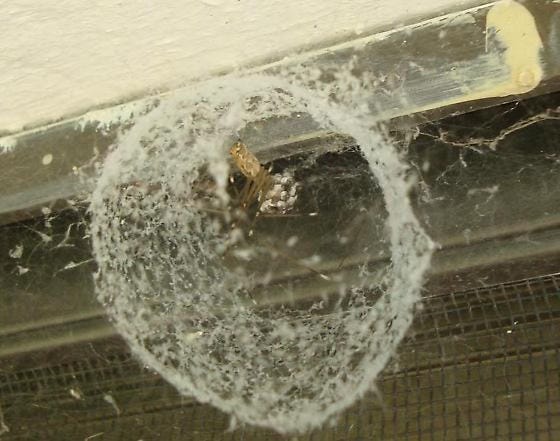
Back to Necessity
Which brings us back to Necessity, or Anankē, She who holds us in space-time. She whose web of living Fate-beings, the Moirai, literally holds everything in place in our 4D world.
As that force of cosmic separation, Necessity has her uses, for sure. We wouldn’t exist without Her! (Nor could stones, plants, stars, cats, slugs, micro-organisms, meteors, clouds, winds, waterfalls, light or anything else, for that matter.) Anything that we can perceive in the third (space) and fourth (time) dimensions is traveling in the realm of Necessity, in Her web of Fate.
BUT… the apparent cosmos is just that—apparent, or “seeming” reality, just a portion or facet of the All. So Necessity is also She who keeps us from recognizing or apprehending the All in its totality. She who makes us forget.
What we need, obviously, is a Guide. Someone who can help us untangle ourselves from the “twirled cords of Necessity” and go hurtling into a dimension that we, otherwise, would only be able to postulate as a hypothetical, but never visit.
…which brings us back to the river, and (at last) to Chthonic Hermes!

And so at last we come back to Hermes, spilling out of the river Cocytus at the entrance to the Underworld.
Let’s do a close reading of that first line of the hymn. The Greek naiōn can be read either as “running/spilling over,” referring to the river Cocytus, or “dwell/abide in,” referring to the subject of the hymn, Hermes. And the phrase “
The Orphic poet, of course, chose the wording carefully to mean BOTH the river spilling AND Hermes dwelling.
The hymn is thus teaching us (within its very first line!) that within the very web of Fate that Necessity is spinning for us all, the path that we might conventionally think is one of “no return,” there is One who dwells there whose job it is to accompany us, and to help us remember that there is another dimension beyond space-time, where we always already are abiding, always already are present fully with the All.
Hermes as Fifth-Dimensional Trickster
So now we finally get to the heart of this hymn, Hermes in his Chthonic, Underworld guise.
Astronomical Hermes
The appearance of the planet Mercury in the sky helps us understand the imagery of Chthonic Hermes a bit better. From the perspective of an observer on earth, the planet Mercury does this nice little dip and swerve in its path—not just backwards and forwards in space, but also above and below the ecliptic, or path of the sun. So Hermes moves in all three spatial directions, plus, of course, through time.
Gary P. Caton had a very neat diagram of this movement on this on his Facebook feed recently. In general, because he emphasizes naked-eye observation of the sky as the basis for much of his astrological and esoteric work, Gary’s insights are super helpful in understanding the way that the ancients made their own astronomical/astrological associations. I’d highly recommend checking out his work.)
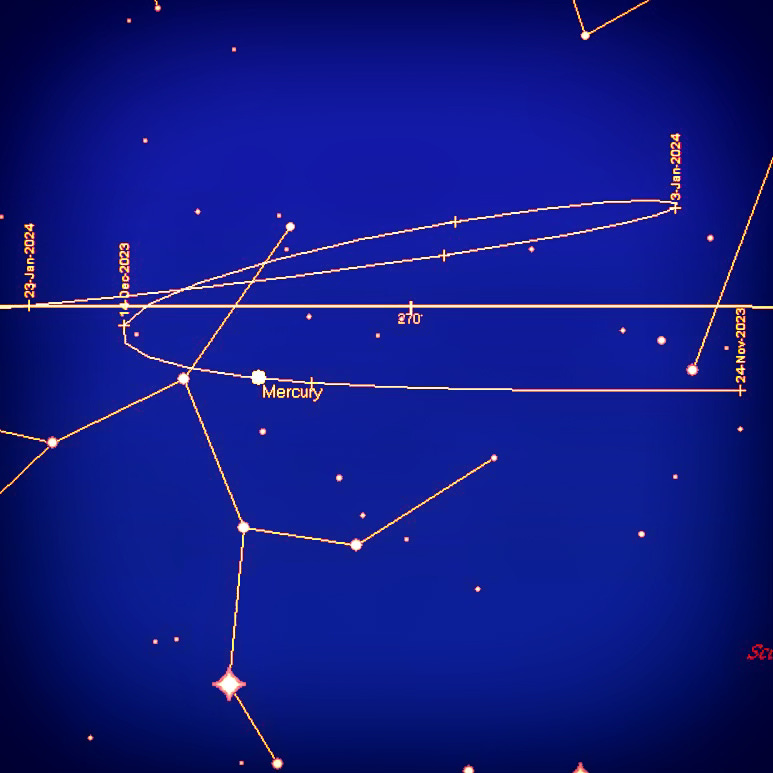
What I love about Gary’s diagram is that it makes really clear the phenomenology (that is to say, real lived experience) of Hermes as we see Him in the sky. Hermes quite literally starts out below the Sun, then twists and twirls up and back before descending again.
Sound familiar? It should. It’s right there in the first line of the hymn:
dwelling in Shrieking Necessity’s
twirled cord, her twisted strain,
You lead the souls of the dying
down to nether-Earth.
Hermes in the Fifth Dimension
But I promised you a Fifth-Dimensional Hermes.
I must admit that I’ve kinda tricked you, because I can’t actually say for sure which dimension the All resides in, because, of course, it resides everywhere and also nowhere. But I like to play with the idea of a Fifth Dimension that encompasses all the others, but is largely invisible to us even when we’re in the middle of it. (Remember the Flatlanders and their visit from Mr. Apple?)
And I also love the idea of five as a figure of Aphrodite, because Venus’ five-petaled rose formation as she appears to circle the earth (from a geocentric perspective) is so, so beautiful.
And I also love the idea of Hermes as being dedicated not to our “salvation,” in the sense of rescuing us from a fallen world, but to our process of remembering.
For Hermes doesn’t come Seal-Team-Six-style, to extract us from the web of Fate. That would imply that on the one hand, Fate is bad/the enemy, and on the other hand, extraction/salvation from Fate is good. And indeed, many readers (and even scholars) have understood the hymns to be working out of a framework of salvation and sin. (To be fair to them, thinking outside of the framework of good/evil can be very hard for us modern folk, especially since later ancient writers took up the Orphic vocabulary and used it for their own dualist philosophies.)
But that’s not how the Orphics roll. If we look at the wording of the hymns themselves—especially at all the more subtle or esoteric sentence structures that lie beneath the more obvious surface-level meanings—we see that a belief like “Fate is bad and escape to the All is good” simply can’t be logically sustained.
For Necessity, the Orphic Hymns themselves tell us, is the CHILD of Aphrodite. Which is to say, Necessity Herself is ALSO always already part of the All, as is her web of Fate-bodies. We are left with this gorgeous truth:
There is simply no escaping Aphrodite’s embrace. We always have been and always will be contained within Her Being. It is love, love, love all the way down.
THIS is why Hermes is figured as a trickster: because He dwells in the very terrain of that which appears to bind us. And, like a little love note from the All, He reminds us of who we are (the All) and where we always already are (home).
Depending on our circumstances, Hermes might remind us in a gentle way—like in the vase pictured above, where he so very gently reaches for the hand of the bewildered deceased. Other times, Chthonic Hermes might come to us as an alarm clock of sorts, or even hard wake-up slap: “Remember the f*ck who you ARE!!!!”
And another thing: because he dwells in the very terrain of Necessity’s Fate-body-web, He knows all the paths like the back of His hand, as well as all the passwords, tricks, and feints needed to navigate through and with each manifestation of the All as it arises in our journey. That’s why he’s tricksy…not simply because He exists in the realm of the both/and (because, when it comes down to it, we ALL dwell there, we just tend to forget), but because He REMEMBERS he exists in the both/and, and is highly skilled at helping us remember too.
This is also why Chthonic Hermes is invoked for the success of the Mystery rites in the last line of His hymn. Because through the recitation of these hymns and their accompanying rituals, we lay the groundwork for remembering who we really are.
And with that, I give you His hymn.
Recite it carefully, because when you invoke him, you’re asking to be woken up and the means by which that happens doesn’t always appear in the way you would prefer! But He won’t fail you. In fact, He CAN’T fail you, because you always already were in the arms of Aphrodite from before the very beginning of time.
Yours in Earth and Starry Sky,
✨✨Kristin






